Rab Talus Ultra Shorts
Fabric: (Main) 86% polyester, 14% elastane. (Second) 85% polyamide, 15% elastane. (Lining) 100% polyester
Inseam: 5”
Size Tested: Men’s Medium
Test Duration: 65 miles
Reviewer: 5’9”, 150 lbs / 175 cm, 68 kg
Stated Weight: 81 g
Blister Measured Weight: 78 g
MSRP: $75
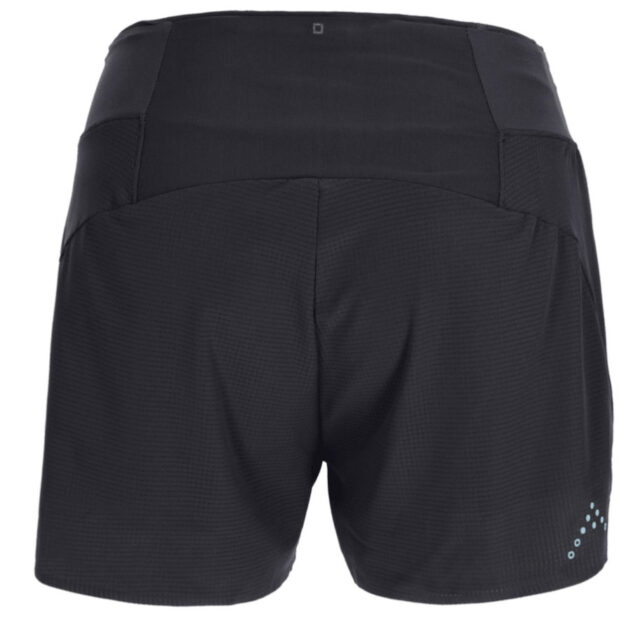
Aside from shoes, designing a pair of shorts specific to the demands of trail running might have the highest degree of difficulty. Successful examples balance the need for full range of motion, durability, lightness, and on-board storage, things that frequently overlap and conflict. Finding an equilibrium that accounts for all of these concerns usually starts with settling on the right materials; basic comfortability can go a long way in making up for minor shortcomings in design.
If there are two things Rab nailed with their Talus Ultra Shorts, it’s their composition and fit. Built using the brand’s proprietary “Matrix Aero” stretch fabric for the outer short and a mesh-like “Motiv Aero” jersey fabric for the inner short, Rab smartly blends polyester and elastane to create a material that feels lightweight, compressive, and stretchable. The Talus Ultra’s inner and outer sections — complete with bonded side splits — glide independent of one another, allowing for full hip extension while running, and Rab’s “Flexile 100” stretch waistband keeps the shorts level, even when its pockets are full. I’d also add that the inner stretch lining is higher volume than other shorts I’ve worn with built-in underwear, unlikely to ride up even on runners with muscular lower bodies, like myself. Together, this modular design, as well as the Talus Ultra’s stitch-free hems and flat lock seams, also help mitigate chafing, the source of many short’s undoing.
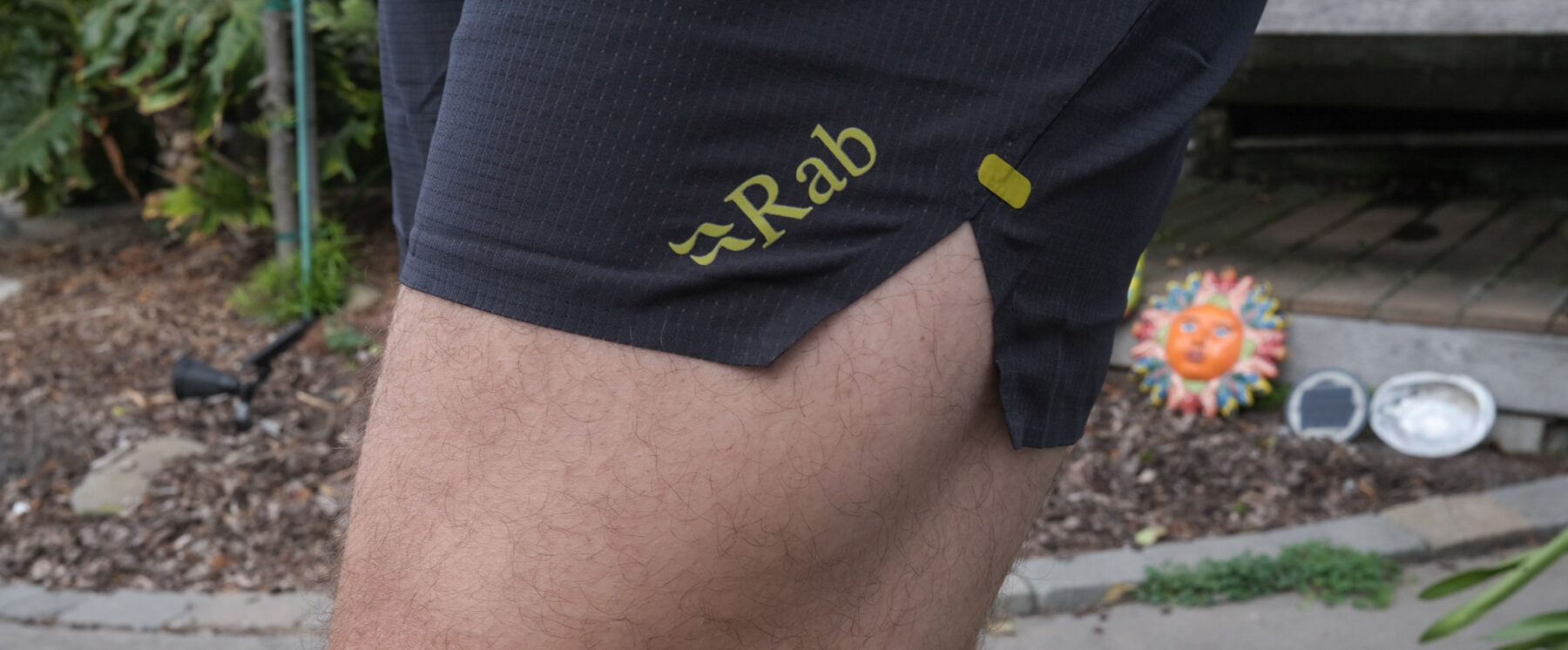
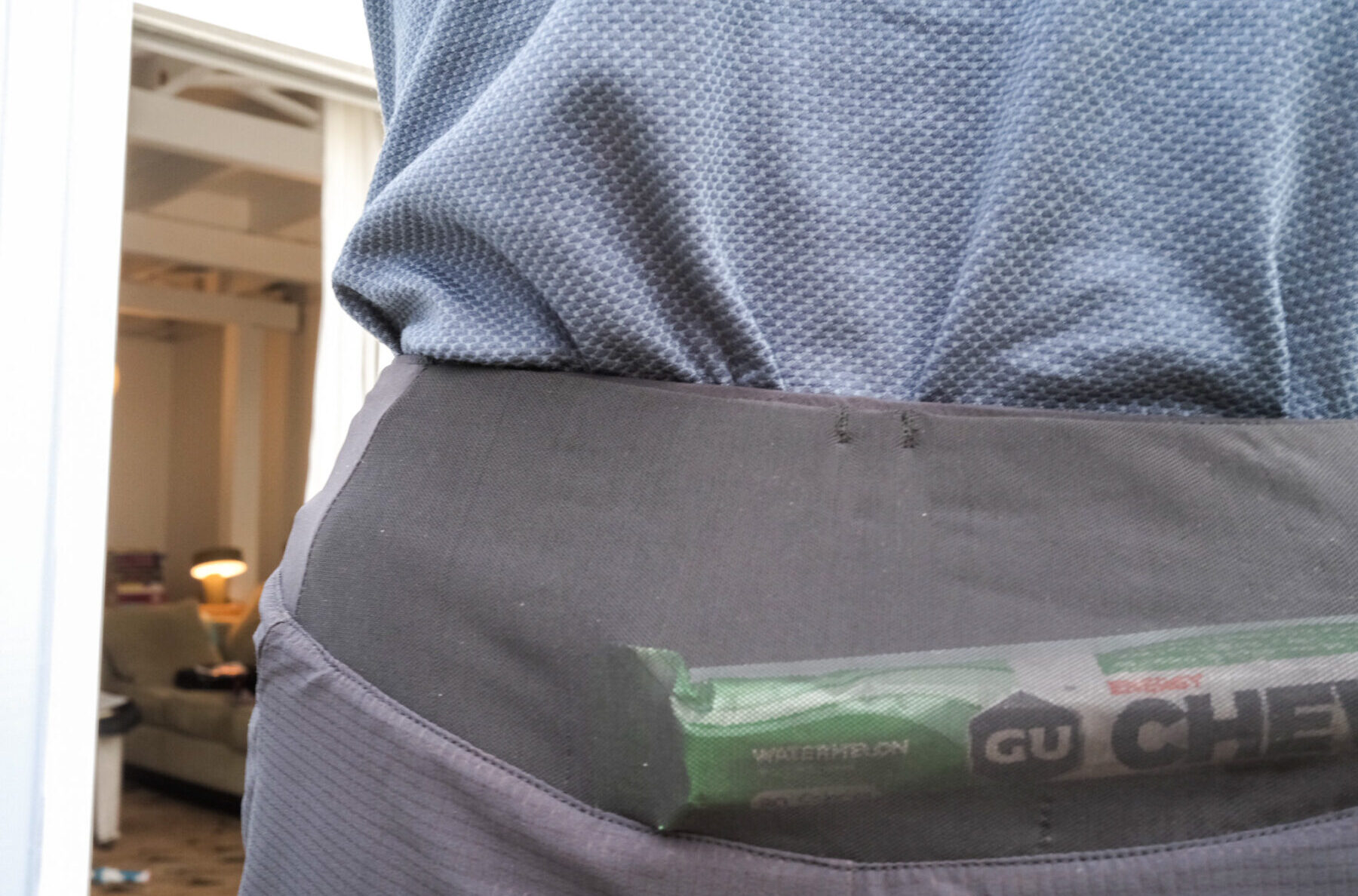
Rolled between fingers, the polyester / elastane blend Rab uses for the Talus Ultra Shorts’ outer layer is reminiscent of the material Salomon uses for their Sense Aero shorts, a thin gridded fabric that is semi-translucent when held up to light. The likeness between the two gave me pause. A couple of years ago I was out on a run in a pair of Salomon shorts of similar build to the Talus Ultras when a feral branch lying in wait on the side of the trail literally undressed me from the waist down, leaving me nearly nude in nothing but tatters. I’ve been reluctant to trust lightweight shorts of that sort ever since.
Nothing has forced its way through my pair of Talus Ultras so far though, but I can’t imagine them fending off barbs from trailside brush any better than my fated Salomon shorts did, or rather, failed to do. But for how airy and mobile they feel, paying extra notice to avoid errant tree limbs and using sturdy shorts for runs likely to involve some bushwacking is a compromise I’d make a thousand times without blinking twice. That’s not to say that the Talus Ultras are inherently delicate, either. While Rab avoids stitching to reduce friction with skin, they do weld the hem of each leg to prevent fraying, which has worked well so far. Stitching is, however, used along the outside of the waistband and to secure the rear yolk pocket, two areas that are commonly under load and not in contact with skin.
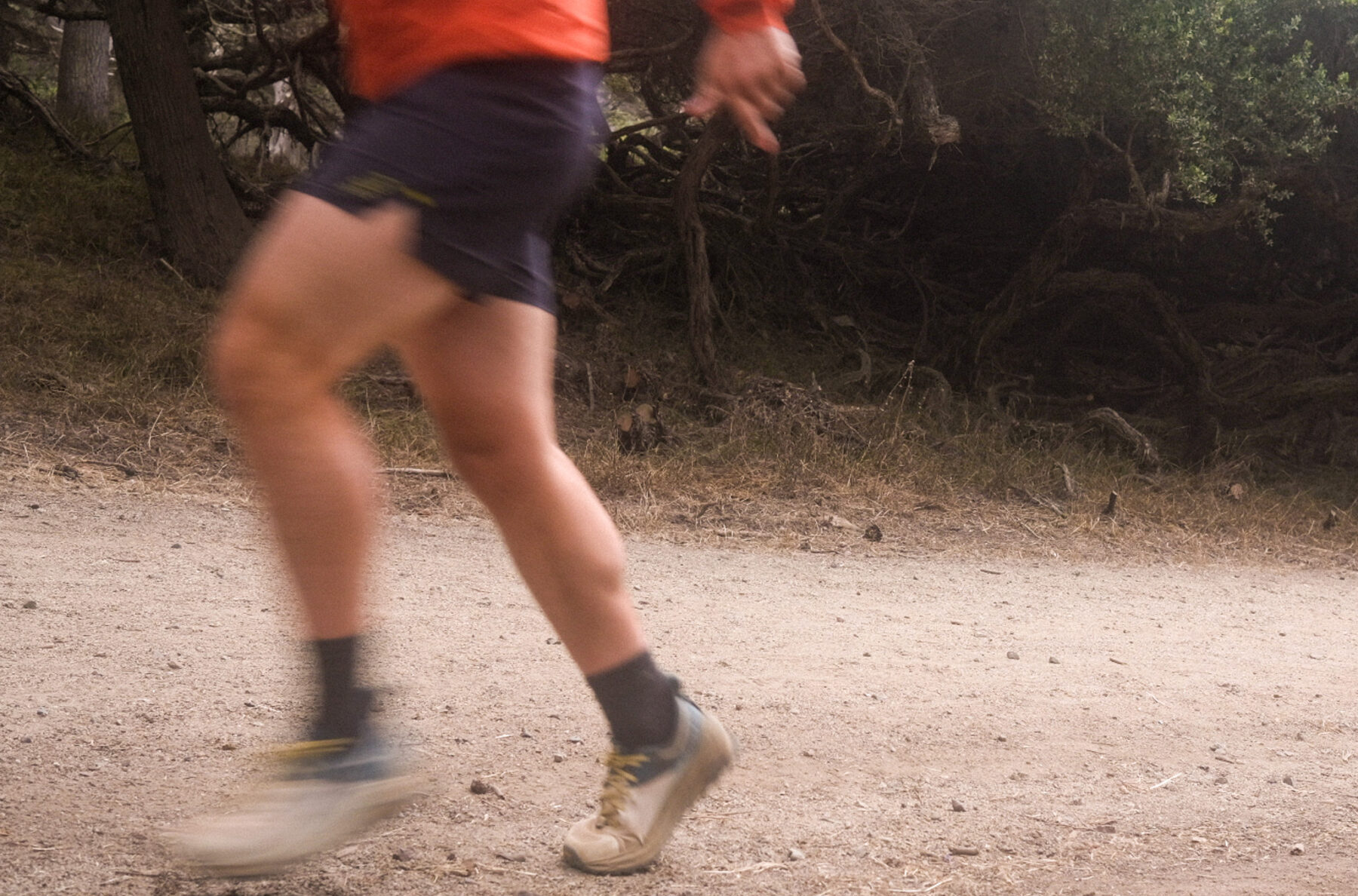
Rab Phantom Waterproof Pull-On Jacket
Fabric: 100% polyamide with polyurethane coating
Size Tested: Men’s Small
Test Duration: 65 miles
Reviewer: 5’9”, 150 lbs / 175 cm, 68 kg
Stated Weight: 86 g
Blister Measured Weight: 75 g
MSRP: $200
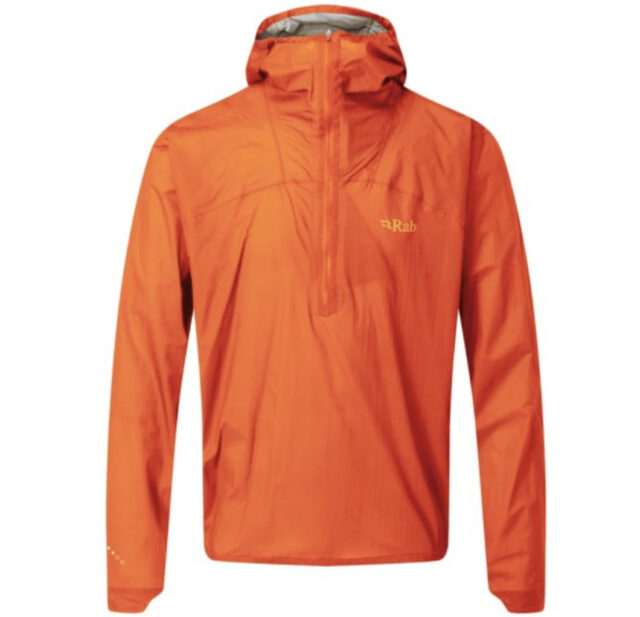
Shoulder season can be a trying time of year for runners. With temperatures all over the place, deciding on the appropriate attire to wear is less of a science and more of an art (the site of an old stress fracture in my foot aches when rain is in the forecast, which gives me a slight advantage I suppose). For days when weather looks like it’s going to just wing it, I’ve relied on ultralight jackets as an insurance policy. While definitely a niche category of clothing, these layers are highly versatile and generally pack down small enough that you might as well stuff one in your pocket / pack before a run if there’s any chance you’ll need it.
As part of Rab’s Skyline Collection, their series of high-performance mountain running apparel, the Phantom Waterproof Pull-On Jacket is billed as a super portable stash-and-forget waterproof shell, perfect to warm up in at the start of frigid runs or to throw on mid-effort if the skies happen to open up. Generally, stashable jackets are only windproof / water resistant (thinking here of the well-known Patagonia Houdini Jacket); waterproof materials tend to be on the heavier side and less amenable to compressing down than plain nylon.
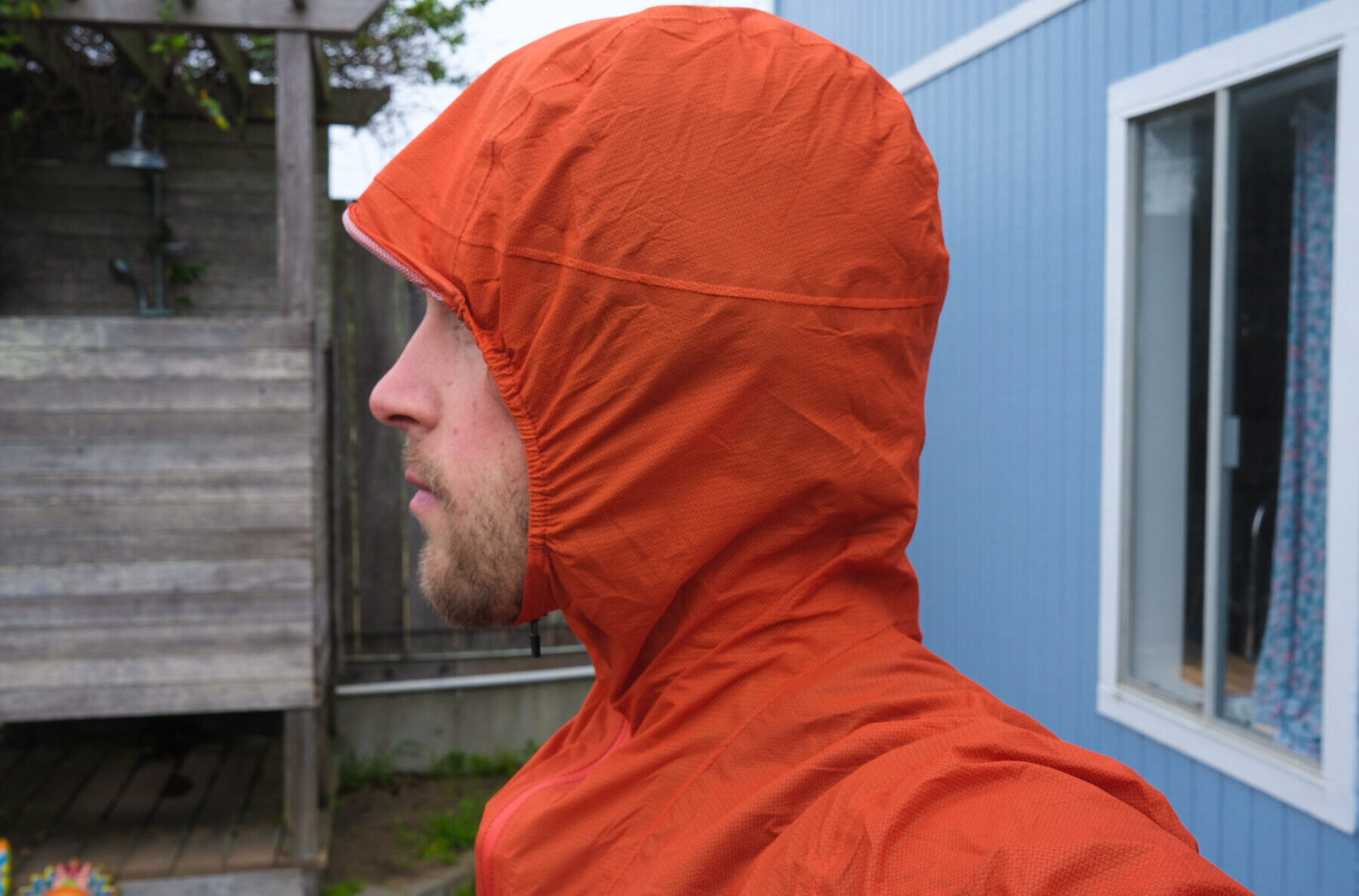
My Phantom Waterproof Pull-On Jacket arrived just in time for the late stages of a classically San Francisco summer. I’ll include that hackneyed Mark Twain quote all the locals hate to give you a better idea of what I mean — “The coldest winter I ever spent was a summer in San Francisco.” Indeed, “Faugust” buried the month of September in a chowdery marine layer, and so far, Fogtober has lived up to its name. Coastal fog tends to stick in the valleys nearby, sitting low enough that I’ll swoop in and out of it like a seafaring bird on most of my morning runs. A chill lies beneath its gray ceiling, and the suspended water droplets that make up its composition are heavy enough to cling to your clothes, wetting them in the process. But above the fog, most days are still pretty short-sleeve warm, creating a dichotomy that can make regulating temperature hard.
In the past few weeks, I’ve relied on the Phantom Waterproof Pull-On Jacket to help me make sense of the Bay Area’s stark microclimates. When stored in its stuff sack, it slipped easily into the back yolk pocket of the Talus Ultra Shorts, readily accessible for when I needed it. The fact that it’s a pull-over means I didn’t have to come to a complete stop to put it on; there’s no full zipper to line up, which can be a challenge when hands are cold. Rab went to great lengths to ensure that the Phantom is accommodating enough not to restrict movement while running whilst still retaining a trim fit, something that definitely translated to how the jacket felt on trail. When submerged in fog, I threw the Phantom on to keep moisture at bay, which it shrugged off while still remaining fairly breathable, roughly the same as a non-waterproof windbreaker. Once above the cloudlayer, I’d quickly pull it off, give it a quick shake, and stash it, only to repeat the same sequence a few miles up the trail.
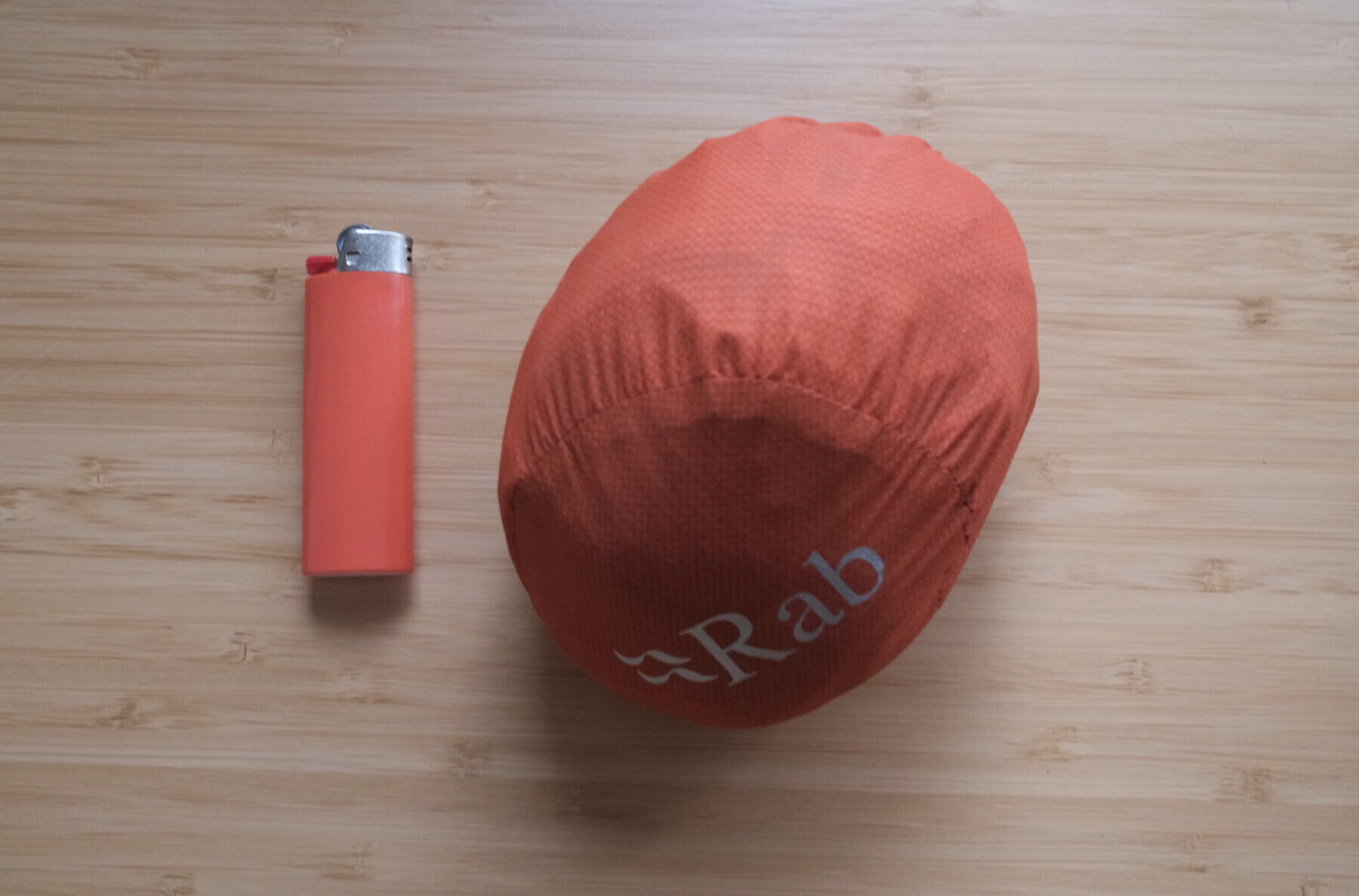
Going ultralight requires making some trade-offs, and the Phantom Waterproof Pull-On Jacket’s commitment to minimalism clearly affected its ability to keep me dry under sustained bouts of rain. For legit precip, I’d definitely recommend opting for heavier-duty waterproof layers like the Arc’teryx Norvan LT Hoodie or Patagonia’s excellent Storm Racer Jacket, two examples that aren’t as ultra-stashable but will probably hold up better over time and do a better job of shielding you when the weather sours. But for fog and minor drizzle, the Phantom outperformed every other jacket I’ve tested of comparable weight, which mainly consisted of windbreakers; it’s that light.
Durability is by far my main concern when it comes to the Phantom’s long-term viability as an option for daily wear. Put plainly, it’s a delicate layer, one that seems more susceptible to abrasion than less minimalist shells. On a few longer runs, I ended up donning / taking off the jacket on 6 separate occasions, cramming it crudely into its small stuff sack each time. Aside from an acute fall, damage from repeatedly packing and unpacking the Phantom in transit will probably be the reason I need to eventually retire it. When that day will come, I do not know. In the intervening time, I’ll continue to tote it along with me on mornings when I can confidently call clear skies on their bluff.
Since you can never trust the weatherman, Rab’s Phantom Waterproof Pull-On Jacket makes sense as an ultralight form of insurance. While I’d recommend a more substantial layer for truly rainy days, the Phantom should buy you some (dry) time in a pinch if it really starts to poor. Where the jacket really thrives is in soupy conditions caught somewhere between a mist and a drizzle, scenarios where a windbreaker, while protective against gusts, begins to let in moisture. If you run in an area prone to year-round mist and fog like I do, I’d definitely put Rab’s Phantom Jacket on your list.

Hi Matt
Is it possible to elucidate please –
Bit confused by this – the meaning of :
“The rest of the jacket”
Here it is in context:
“ To start, they use a 2-layer construction with taped seams and “7D Pertex® Shield 2.5L” fabric for waterproofing purposes, one of the lightest and, importantly, stretchiest waterproof laminates I’ve worn to date. The rest of the jacket is made from polyamide (aka, nylon) with a polyurethane coating”
It leaves me wondering which parts are 7D Pertex and which are coated polyamide?
Surely the 7D Pertex is superior. One wonders why it’s not all Pertex?
Hey Neil,
Thanks for your question. I think the simplest answer would be, well, both. The Phantom Jacket’s 2-layer construction consists of 7D Pertex for the outer fabric with PU coated nylon underneath, which acts as a sort of internal liner. Apologies if that wasn’t clear!
Matt